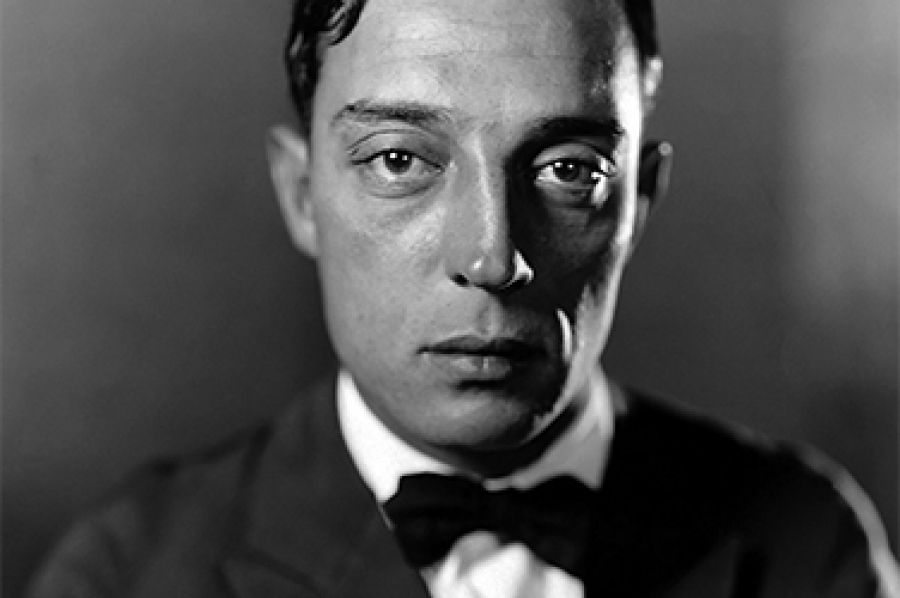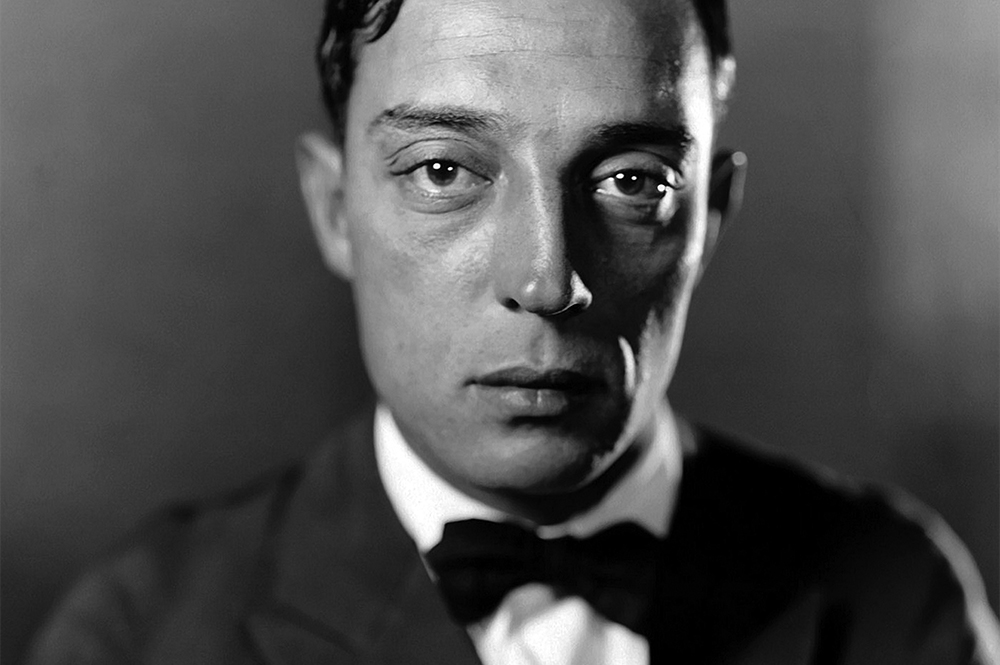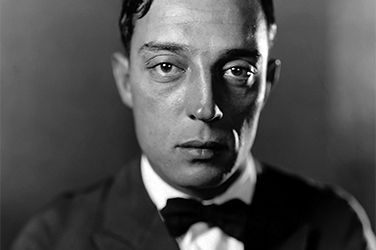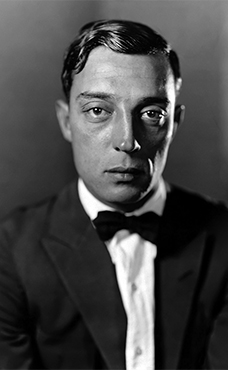
- Free Article: No
- Contents Category: Language
- Custom Article Title: Stone face: The history and prehistory of deadpan
- Review Article: Yes
- Article Title: Stone face
- Article Subtitle: The history and prehistory of deadpan
- Online Only: No
- Custom Highlight Text:
A deadpan comedian maintains a straight face or an even tone while delivering ridiculous content. As a performance of humourlessness that makes people laugh, deadpan registers tensions in contemporary culture. Comedy is among the most popular modes of entertainment and social commentary: the Melbourne International Comedy Festival, for example, is Australia’s largest ticketed cultural event, with attendances of up to 770,000. But over the past few years, criticism of comedy’s traditional reliance on stereotypes and its misogynistic and homophobic industry conditions has intensified as high-profile comedians (Bill Cosby, Louis C.K.) were denounced or tried for sexual misconduct and as a new generation of ‘woke’ comedians have engaged with a resurgent cultural earnestness, often disparaged as ‘PC humourlessness’.
- Article Hero Image (920px wide):

- Article Hero Image Caption: Buster Keaton, 1925 (WolfTracerArchive /Alamy)
- Featured Image (400px * 250px):

- Alt Tag (Featured Image): 'Stone face: The history and prehistory of deadpan' by Sarah Balkin
That this cultural shift has shaken the comedy industry is apparent in MICF’s 2019 rechristening of its best show award, originally named after festival co-founder Barry Humphries, following Humphries’ negative comments about transgender people. Lesbian comedian Hannah Gadsby, who famously condemned comedy and angrily lectured audiences about misogyny and homophobia in her 2017 Barry Award-winning show Nanette, was among those who expressed discomfort with Humphries’ views. These cultural moods are being felt internationally as well as in Australia. As the American literary and cultural critics Lauren Berlant and Sianne Ngai noted in their 2017 essay ‘Comedy Has Issues’, on the one hand ‘people are increasingly supposed to be funny all the time’, while on the other, ‘humorlessness is on the rise’. Some of the highest-profile comedians are now reflecting on what’s not funny in their shows, from Gadsby’s long serious sections in Nanette – in which she was accused of substituting pedagogy for comedy – to American comedian Dave Chappelle’s rejection of cancel culture in his recent Netflix comedy specials.
Deadpan’s gap between style and substance has a history and a prehistory. Its history dates to the silent film era. The first recorded use of the term was in a November 1927 issue of the American magazine Vanity Fair, which explained that ‘poker-face’ and ‘dead-pan’ both mean ‘a lifeless facial expression’. (‘Pan’ was American slang for ‘face’.) The second recorded instance, a 1928 New York Times article about film industry slang, defined ‘dead pan’ as ‘playing a role with an expressionless face’, with reference to Buster Keaton’s signature style. Keaton developed his ‘great stone face’ as a child vaudeville star when he realised that he elicited more laughs if he didn’t show the audience he was enjoying himself. The adult Keaton’s deadpan was stoic but expressive; viewers mostly know what his characters want and feel: to get the girl, survive the cyclone, or wear a pleasing hat. Rather than obscuring emotion or motive, Keaton’s under-responsiveness shows poise and determination in a chaotic world.
As Keaton’s childhood in vaudeville suggests, deadpan had a prehistory in theatre. It is this prehistory that is best positioned to give insight into our contemporary collision of humour and humourlessness. The nineteenth century was the era in which one’s sense of humour came to be recognised as a core value and an expression of self, even as earnestness became a prevailing cultural ideal around 1830. English deadpan tended to parody this earnestness and the culture of respectability. This tendency is evident in Gilbert and Sullivan’s comic operas, in which the actors were instructed to play absurd premises with earnestness and decorousness; and in Oscar Wilde’s stipulation of impassivity and expressionlessness in the servant and dandy characters of An Ideal Husband (1895). To perform comic material earnestly and with seeming unconsciousness of its funniness, that is, made it funnier. These quieter comic styles were hailed as innovations that departed from the emotional, melodramatic acting conventional to the nineteenth century. To perform earnestly was also to render the social ideal of moral seriousness a comic style. The Victorian prehistory of deadpan can help us see that deeply held social values and performances are not mutually exclusive.
Early American deadpan often parodied New England’s culture of education and moral instruction; in so doing, performers mocked and participated in an emergent American public culture. For example, the first American comic archetype, the 1830s stage Yankee, appeared in plays and comic lectures that burlesqued serious educational lectures. The Yankee’s proto-deadpan attributes included telling a ridiculous story without appearing to understand its point and delivering the punchline without vocally marking it. In contrast to the Yankee’s underplaying, the nineteenth century’s most popular comic genre, the blackface minstrel shows that proliferated from the 1840s onward, relied for their humour on the stereotype of African Americans as over-emotional and lacking in self-control. These examples suggest how proto-deadpan performance styles rendered classed and racialised attitudes, such as composure and animation, a source of humour decades before Keaton’s stone face.
The politics of underperforming are further shown by the popular comic lectures of white New Englander Artemus Ward (pseudonym of Charles Farrar Browne), Abraham Lincoln’s favourite humorist, whose feigned incompetence and grave demeanour induced hilarity in American and English audiences during and after the Civil War. (Ward’s published humour sketches also circulated widely in Australia, though he died before he could tour here.) A comedian, Ward affirmed, must have ‘no politics’, meaning he must get along with everyone off-stage and read the room on-stage. Ward did not have ‘no politics’ in the sense of having no beliefs – he donated lecture profits to the Union cause during the war – but as a way of successfully performing to politically polarised audiences.
The weak politics of Ward’s emergent deadpan might be seen as an inverse predecessor to the identity-driven politicisation of comic persona in contemporary culture.



Comments powered by CComment